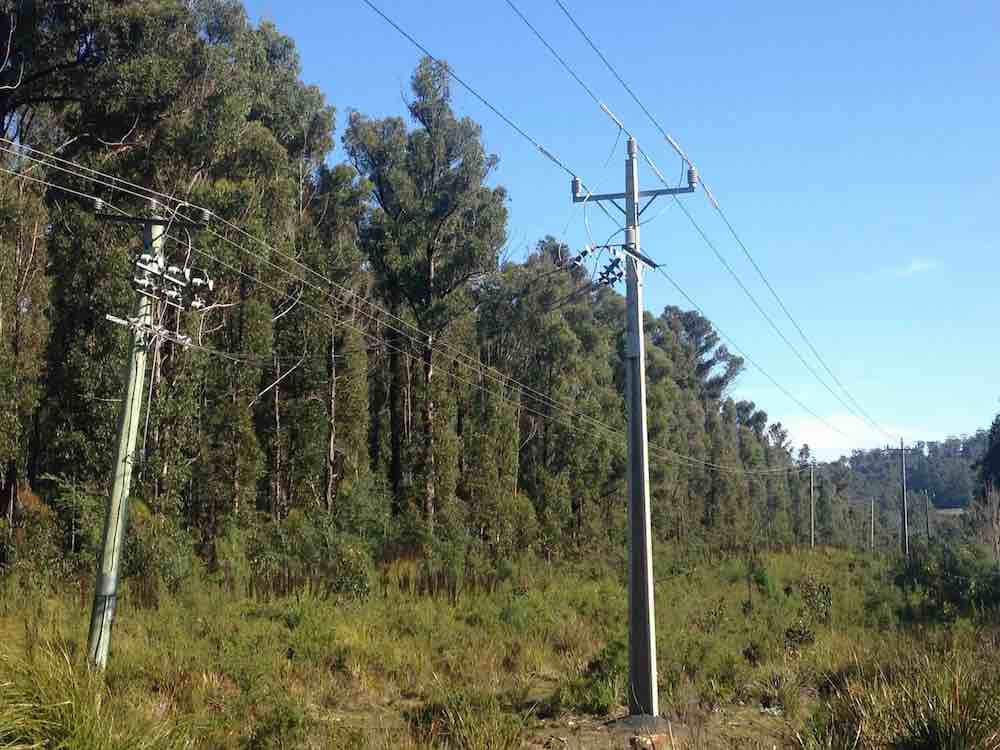
Tasmania’s first community microgrid, which has combined 25.6kW of solar PV and 54kWh of Tesla battery storage, is successfully powering a group of social housing tenants at the edge of the state’s grid on the Tasman Peninsula – including through two major outages.
The pilot project in central Nubeena was developed by not-for-profit community group Tasman Peninsula Power with financial backing from the state Liberal government, following an election promise back in early 2018.
Three years later, and with another state election looming, the Nubeena Residential Microgrid (NRM) has been completed, having been designed and installed on 5 two-bedroom units by Tasmanian firm Mode Electrical – the units were also financed by the state government and are managed by the Tasman Council.
The idea for the microgrid was first conceived as a way to share cheap and sustainable solar PV among the community, while also providing a reliable source of emergency, back-up power during network outages – a relatively regular occurrence in this particular neck of the Tasmanian woods.

“We suffer a lot of outages,” one of TPP’s founders and its current chair, Paul Sutton, told One Step three years ago. “In the last 12 months we’ve had 15 outages. Some outages being in excess of 24 hours and in extreme cases up to 60 hours for a number of customers.
“A group of us thought, well, surely we can do something about this. And we formed Tasman Peninsula Power…. We really just want some security at the end of the feeders.”
As was noted at the time, the main culprit behind these outages was usually falling trees, and occasionally other more serious events, like the 2013 bush fires that ravaged the Tasman Peninsula, destroying – among other things – more than 400 power poles.
In the end, TPP’s plans merged with those of the local council, which was about to build a group of new residential units, and a proposal was submitted for the pilot microgrid installation and study.

Sutton said this week that the solar and battery project had got off to “a flying start” providing social housing tenants with reliable power – including through two major network outages – at an almost 13% discount to the comparable market tariff, and with some excess solar left over for the local grid.
“We couldn’t be more pleased with our first months of operation,” said Sutton. “We both provided surplus energy into the grid, and successfully kept the lights on for tenants during two major grid outages that lasted a total of over seven hours.”
As one resident explains it, her unit has black double power points that are connected to the microgrid and that, during a blackout, continue to supply power to whatever is plugged into them.
“I can connect my airfryer so I can still cook and also the lights always stay on too, which is awesome,” the tenant said.
TPP says that tenants are charged a modified time of use tariff, similar to Aurora Energy’s tariff 93, but with lower rates. On top of this, the microgrid offers an extra low ‘solar bonus’ tariff of 7¢/kWh for six hours in the middle of every day, when solar power is usually plentiful.
In the first three months of the pilot, Sutton says tenants used an average of 307kWh/unit/month – around 35% less than a typical two-person household in the area, thanks to the energy efficient design of the units and the careful usage habits of tenants.
Tenants paid an average of $82/unit for the month (before concessions), a 12.7% saving on the same consumption on Aurora’s tariff 93, they said – despite Tasmanian electricity concessions currently only applying to customers of a nationally recognised retailer.
To make up for this, TPP is using some of the grant money to match these concessions for eligible tenants, and the state government has agreed to review the concessions arrangement for residents in embedded networks after 12 months of operation of the microgrid. All up, the pilot will run for “at least” two years.
“To really gauge the success of the project we will need to get through winter when solar generation is lower, heating needs are higher and weather events can cause more frequent outages,” said Sutton.
“But so far it has all been positive. We hope this will be the first of many local community energy projects.”

Sophie is editor of One Step Off The Grid and editor of its sister site, Renew Economy. Sophie has been writing about clean energy for more than a decade.

